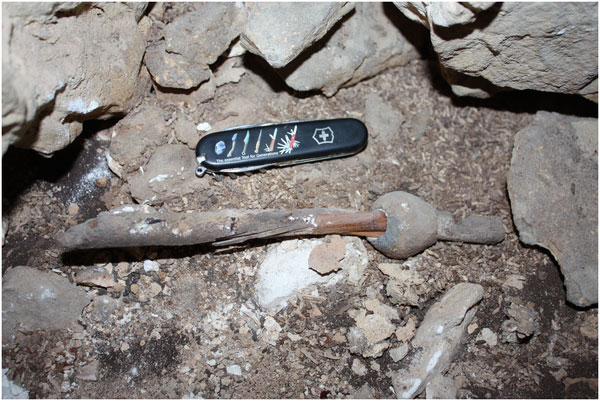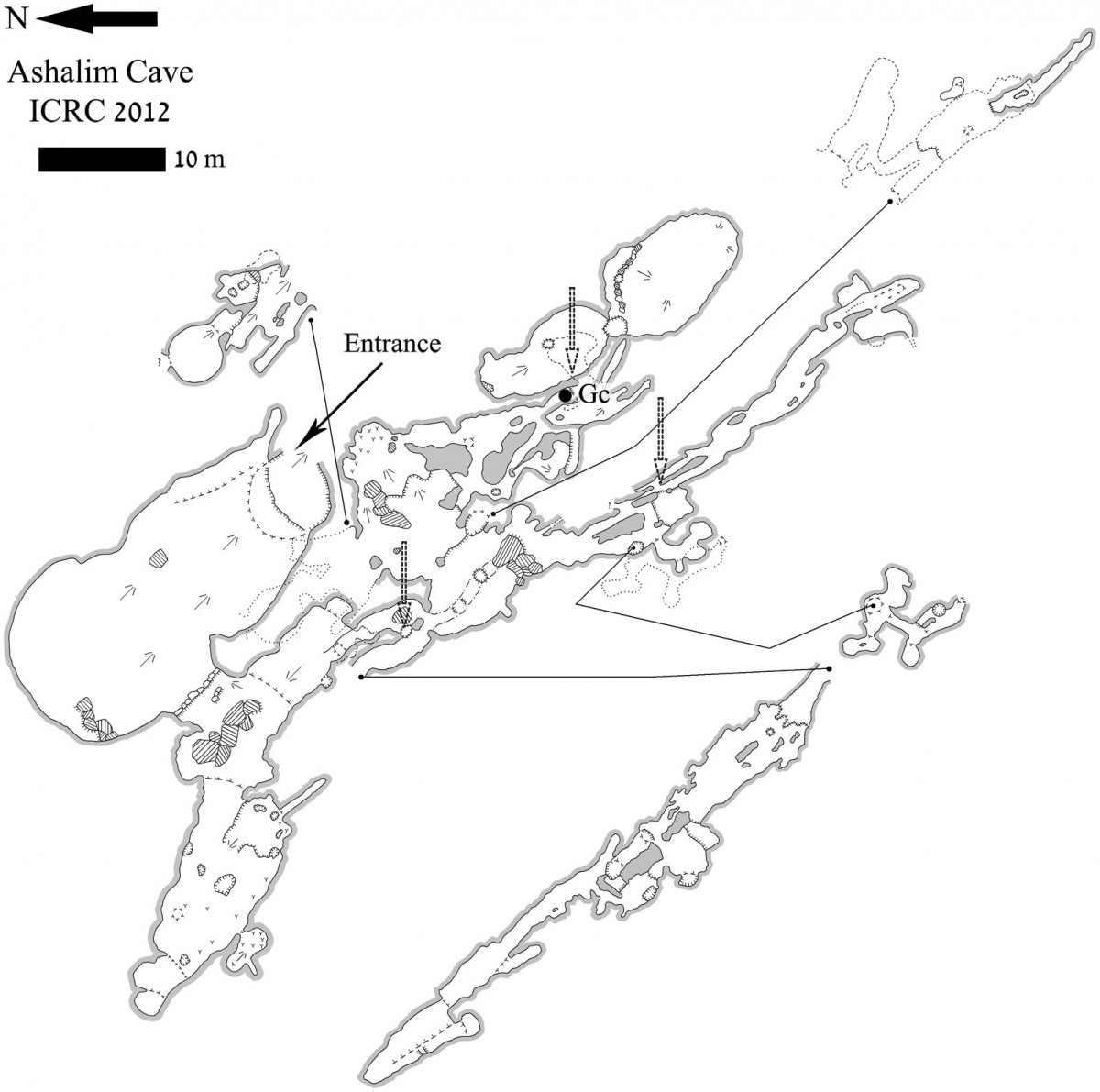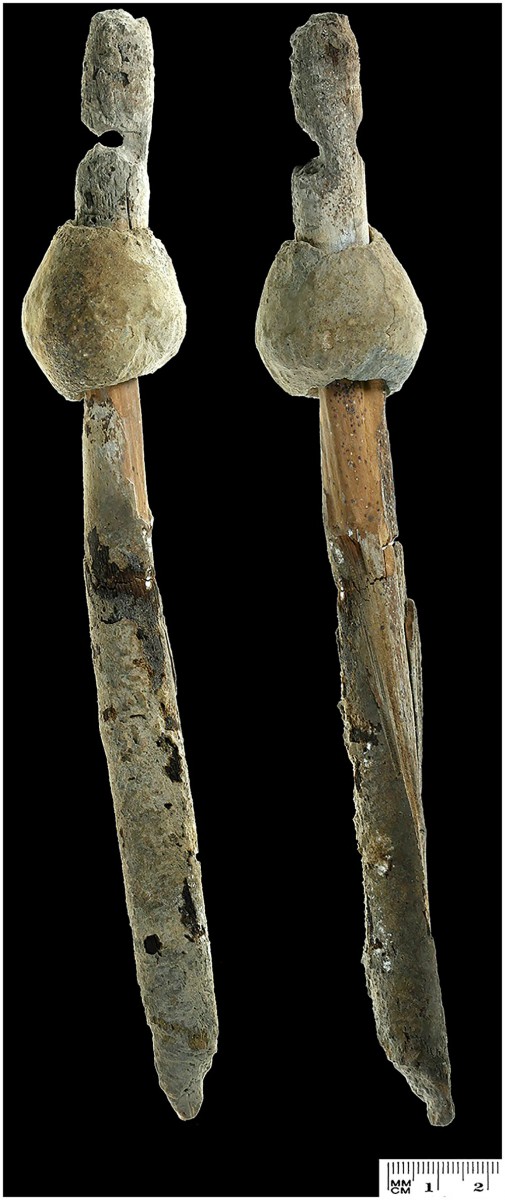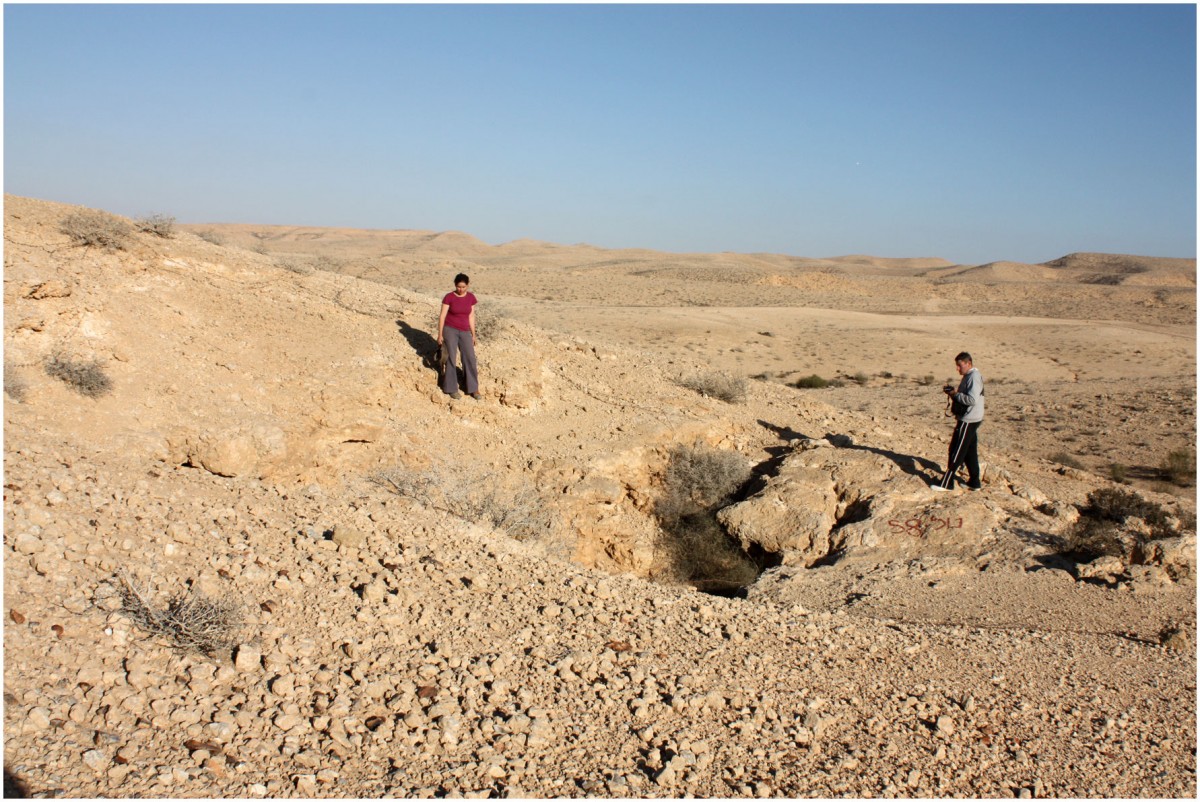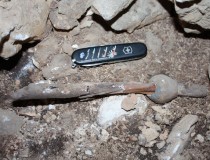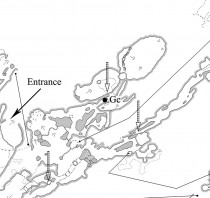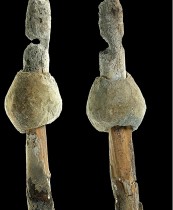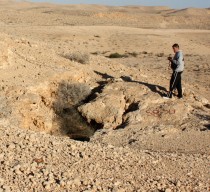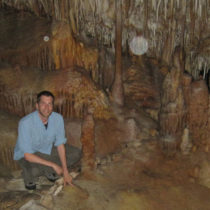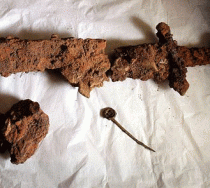A fifth millennium artefact made of lead and wood, in the shape of a wand or a small sword, has been found in a grave in Israel’s northern Negev desert, indicating that people in Late Chalcolithic period, known for copper work, knew how to smelt lead.
The artefact is the oldest specimen of smelted lead on record in the Levant, according to Naama Yahalom-Mack, the study’s lead researcher and a postdoctoral student of archaeology with a specialty in metallurgy at the Institute of Earth Sciences and the Institute of Archaeology at The Hebrew University of Jerusalem.
The uniquely preserved approximately 6,000-year-old artefact was found in a grave next to the remains of an individual, in Ashalim Cave. The cave was known to archaeologists since the 1970s, but in 2012, the Israel Cave Research Centre remapped it and called a team of archaeologists. Mika Ullman and Uri Davidovich who led the archaeological survey found the artefact lying on the ground surface in a chamber so small and low, that they had to crawl inside.
The artefact consists of a stick of wood attached to a sculpted lead piece. The wood is 22.4 centimeters long, and is made of tamarisk. The lead piece is inches long and weighs about 155 grams. Radiocarbon dating suggests it was created between 4300 B.C. and 4000 B.C. and analysis of the lead isotopes suggests it came from Anatolia. According to researchers the artefact “was made of almost pure metallic lead, likely smelted from lead ores originating in the Taurus [mountain] range in Anatolia”.
Lead is rarely found by itself. It is typically found with other elements, such as zinc, silver and copper in nature, indicating that it has to be smelted so that it will be extracted from rocks. In the Late Chalcolithic period there is no evidence showing that people know how to smelt lead, only copper and copper alloys. That is why the artefact is a significant finding, although it is used cannot be specifically determined yet. It could be used for ceremonial purposes or it could be a spindle.
Other examples of lead work are few and not extensively studied, with only two dating to before the fourth millennium B.C. in northern Mesopotamia and eastern Anatolia. However, if scientists can prove that they were also smelted then this could mean that ancient people in the Middle East knew how to smelt lead during the Late Chalcolithic.
The findings were published on Wednesday 2 December in the journal PLOS ONE.
A fifth millennium artefact made of lead and wood, in the shape of a wand or a small sword, has been found in a grave in Israel’s northern Negev desert, indicating that people in Late Chalcolithic period, known for copper work, knew how to smelt lead.
The artefact is the oldest specimen of smelted lead on record in the Levant, according to Naama Yahalom-Mack, the study’s lead researcher and a postdoctoral student of archaeology with a specialty in metallurgy at the Institute of Earth Sciences and the Institute of Archaeology at The Hebrew University of Jerusalem.
The uniquely preserved approximately 6,000-year-old artefact was found in a grave next to the remains of an individual, in Ashalim Cave. The cave was known to archaeologists since the 1970s, but in 2012, the Israel Cave Research Centre remapped it and called a team of archaeologists. Mika Ullman and Uri Davidovich who led the archaeological survey found the artefact lying on the ground surface in a chamber so small and low, that they had to crawl inside.
The artefact consists of a stick of wood attached to a sculpted lead piece. The wood is 22.4 centimeters long, and is made of tamarisk. The lead piece is inches long and weighs about 155 grams. Radiocarbon dating suggests it was created between 4300 B.C. and 4000 B.C. and analysis of the lead isotopes suggests it came from Anatolia. According to researchers the artefact “was made of almost pure metallic lead, likely smelted from lead ores originating in the Taurus [mountain] range in Anatolia”.
Lead is rarely found by itself. It is typically found with other elements, such as zinc, silver and copper in nature, indicating that it has to be smelted so that it will be extracted from rocks. In the Late Chalcolithic period there is no evidence showing that people know how to smelt lead, only copper and copper alloys. That is why the artefact is a significant finding, although it is used cannot be specifically determined yet. It could be used for ceremonial purposes or it could be a spindle.
Other examples of lead work are few and not extensively studied, with only two dating to before the fourth millennium B.C. in northern Mesopotamia and eastern Anatolia. However, if scientists can prove that they were also smelted then this could mean that ancient people in the Middle East knew how to smelt lead during the Late Chalcolithic.
The findings were published on Wednesday 2 December in the journal PLOS ONE.
